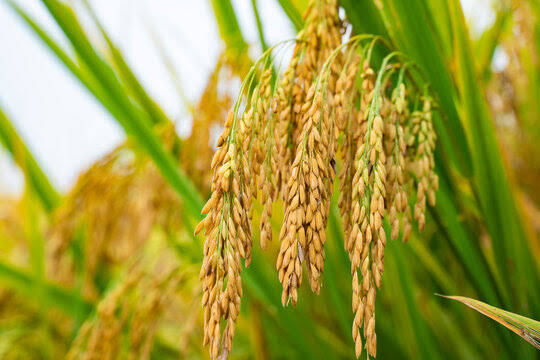The Bangladesh Rice Research Institute (BRRI) has unveiled promising results from the use of its Rice Transplanter cum Fertilizer Applicator, a mechanized planting solution that can increase rice yields by 10–15% and reduce production costs by 20–25%. The innovation was presented at a national technical workshop held at the BRRI headquarters in Gazipur.
The workshop, titled "Validation and Up-scaling of Rice Transplanting and Harvesting Technology in the Selected Sites of Bangladesh (VRTHB)", was jointly organized by BRRI’s Farm Machinery and Post-Harvest Technology (FMPHT) Division and the Krishi Gobeshona Foundation (KGF), with financial backing from both KGF and the Bangladesh Krishi Gobeshona Endowment Trust (BKGET).
Key Highlights of the Project
According to BRRI officials and field researchers, the Rice Transplanter cum Fertilizer Applicator is a dual-function machine that allows farmers to simultaneously transplant rice seedlings and apply basal fertilizers. This not only reduces labor requirements but also ensures uniform seedling placement, optimal plant spacing, and precise nutrient application—three critical factors for achieving higher productivity.Field trials conducted under the VRTHB project in various agro-ecological zones showed:
- 10–15% increase in rice yields compared to traditional manual transplanting.
- 20–25% reduction in planting costs, primarily due to labor savings.
- Improved timeliness in planting, helping farmers adapt to erratic climate patterns and seasonal rainfall.
Expert Insights
Speaking at the event, Dr. Mohammad Khalequzzaman, Director General of BRRI, emphasized the strategic importance of farm mechanization in ensuring food security. “Mechanized rice transplanting addresses the acute rural labor shortage, ensures timely sowing, and enhances productivity. This transplanter-fertilizer applicator can be a game-changer for rice farmers, especially smallholders,” he said.
Dr. Nazmun Nahar Karim, Executive Chairman of the Bangladesh Agricultural Research Council (BARC), attended as a special guest. She praised the initiative, stating, “This project is aligned with our national goal to modernize agriculture and increase productivity through innovation. We must now focus on upscaling this technology and making it accessible to farmers across the country.
”The Road Ahead
The workshop brought together policymakers, scientists, agricultural engineers, and extension workers to discuss scaling strategies. Presentations covered pilot results, machine affordability, training modules for farmers, and maintenance support systems.
The BRRI team proposed that local governments and private sector stakeholders be involved in mass production and subsidized distribution of the machines. Discussions also touched on the integration of this technology into government-supported agricultural mechanization schemes.
The VRTHB project is currently being implemented in key rice-producing districts including Mymensingh, Bogura, and Jessore, with plans to expand to more regions in the upcoming Boro season.
Background: The Need for Mechanization
Bangladesh has faced increasing challenges in its rice sector due to rising input costs, labor shortages during peak seasons, and climate-related disruptions. Traditional manual transplanting is labor-intensive and often inconsistent, leading to uneven growth and lower yields.
With rice being the staple food for over 160 million Bangladeshis and contributing significantly to rural incomes, improving efficiency in rice production has become a national priority.
The BRRI Rice Transplanter cum Fertilizer Applicator provides a viable solution, promoting sustainable farming practices, increasing farmer incomes, and helping Bangladesh stay on track toward food security and agricultural modernization.
Follow & Subscribe:
👉 Agri-Food Update on LinkedIn for the latest updates and insights.
🌐 Visit us at www.agri-food-update.com for more information!



